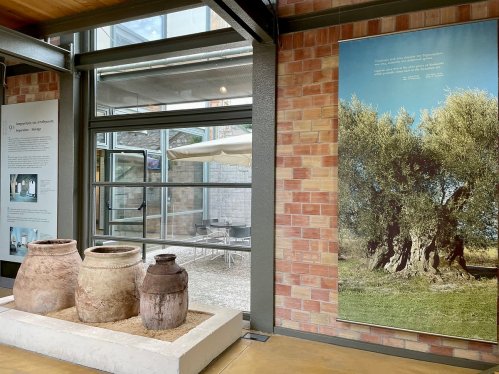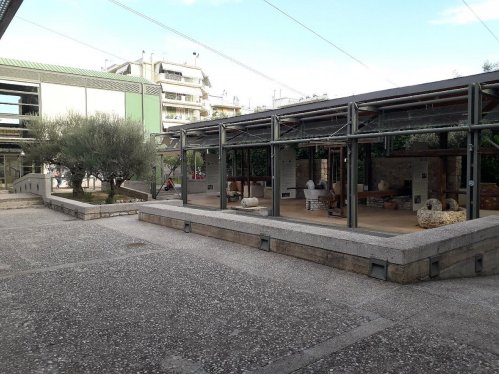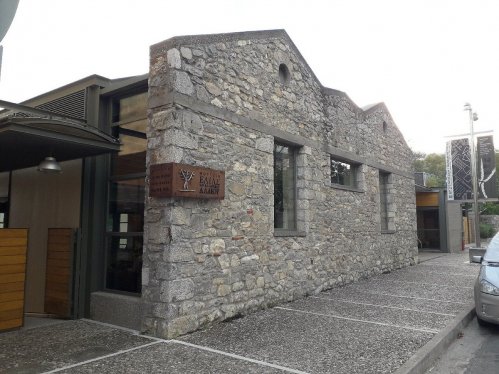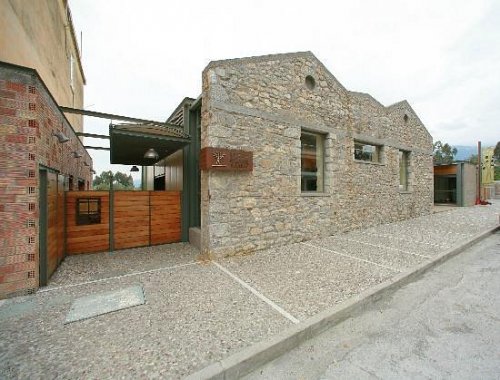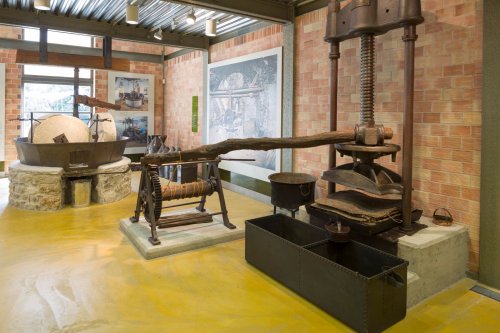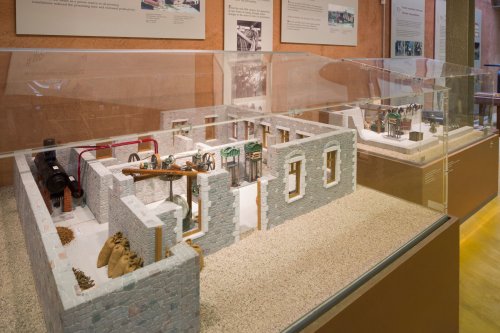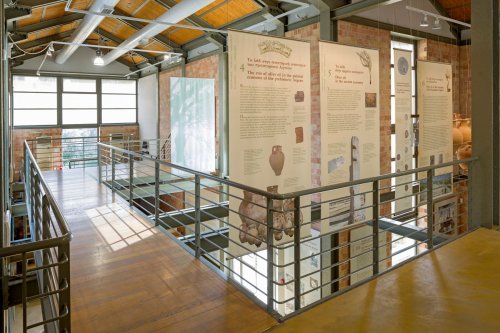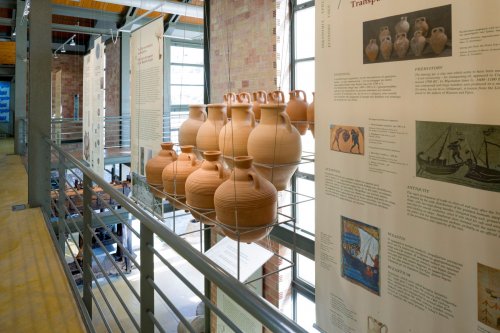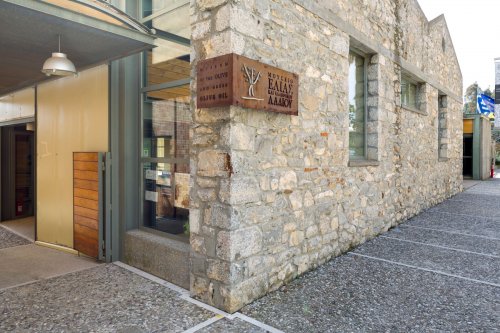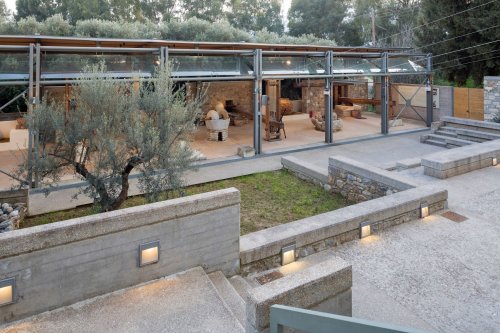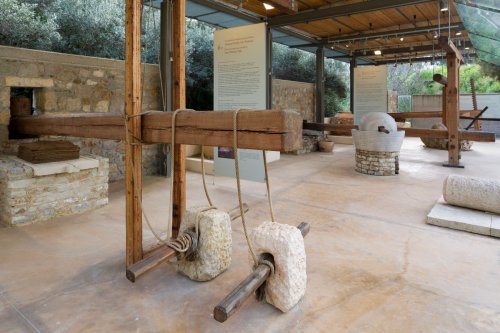Museum of Olive and Greek Olive Oil
The Museum of the Olive and Greek Olive Oil, in Sparta (Peloponnese), transports you to the culture, history and technology of the olive and olive oil production in the Greek realm, from prehistoric times to the early 20th century.
The Museum's objective is to highlight the ineffable relation of the olive with the identity of our country and, more generally, the Mediterranean basin.
The olive and olive oil are presented here from different optical angles: the economy, nutrition and the olive's uses, religious worship, art and technology.
What is on display?
The Museum of the Olive and Greek Olive Oil offers you the opportunity to see the very first testimonies about the presence of the olive tree and the production of olive oil in Greece:
- Rare fossilized olive leaves, 50,000-60,000 years old, from the island of Santorini, the oldest findings offering proof of the presence of the olive tree en Greece
- Linear B Tablets of the 14th century BC (exact replicas), with the first written testimonies about the olive and olive oil.
For each historical period you will discover the contribution of the olive and olive oil to the economy and to everyday life: nutrition, body care, but also now outdated uses, such as lighting.
You will also see how the olive acquires a symbolic dimension in the mythology, religion, the manners and customs of the Greeks.
Examples of ancient and contemporary art prove the place held by the olive in Art and how it was - and continues to be - a constant source of inspiration for Greek artists.
On the ground floor, discover the evolution of the technology used to produce olive oil, from ancient times through to the proto-industrial period. Here you will see:
- Exact replicas of a Prehistoric, a Hellenistic and a Byzantine olive press
- An impressive wooden double press with a winch from the neighbouring village of Xirokambi
- An olive press from the island of Lefkada, which documents the survival of animal power in the 20th century
- Models representing the functioning of engine-powered olive presses.
A separate module is devoted to the production of soap, domestic and industrial: from the large cauldron (harani), still used by old-fashioned housewives to make soap, to the soap-vats used in industry.
At the end of your visit, maps and information leaflets direct you to archaeological sites of olive oil production and to traditional olive presses that can be visited in the Peloponnese and the rest of Greece, so that you might pursue your journey of discovery.
Of interest to children
Young visitors have the opportunity to visit three old olive presses:
- A Prehistoric olive press
- A Hellenistic olive press
- A Byzantine olive press
They can also observe large animated models representing mechanically-driven olive presses:
- A water-powered olive press
- A steam-powered olive press
- A diesel-powered olive press
The Museum organizes educational programmes with games and activities, for schools and group visits, such as the programme «A day at the Hellenistic oil press», where the schoolchildren make olive oil «in the ancient manner».
Address
Othonos-Amalias 129
GR-231 00 Sparta
Telephone: (+30) 27310 89315
Information
Standard entrance fee: € 4,00
Concessionary ticket: € 2,00
Free admission:
Days of free admission:
May 18th (International Museum Day)
June 5th (World Environment Day)
Last weekend in September (European Heritage Days)
Open
From March 1st through to October 15th:
Daily (except Tuesdays) 10 am - 6 pm.
From October 16th through to February 28th:
Daily (except Tuesdays) 10 am - 5 pm.
Closed on: Tuesdays, January 1st, Good Friday (until 12 noon), (Greek Orthodox) Easter Sunday, May 1st, November 26th (local patronal feast), August 15th, December 25th and 26th.

Culture


